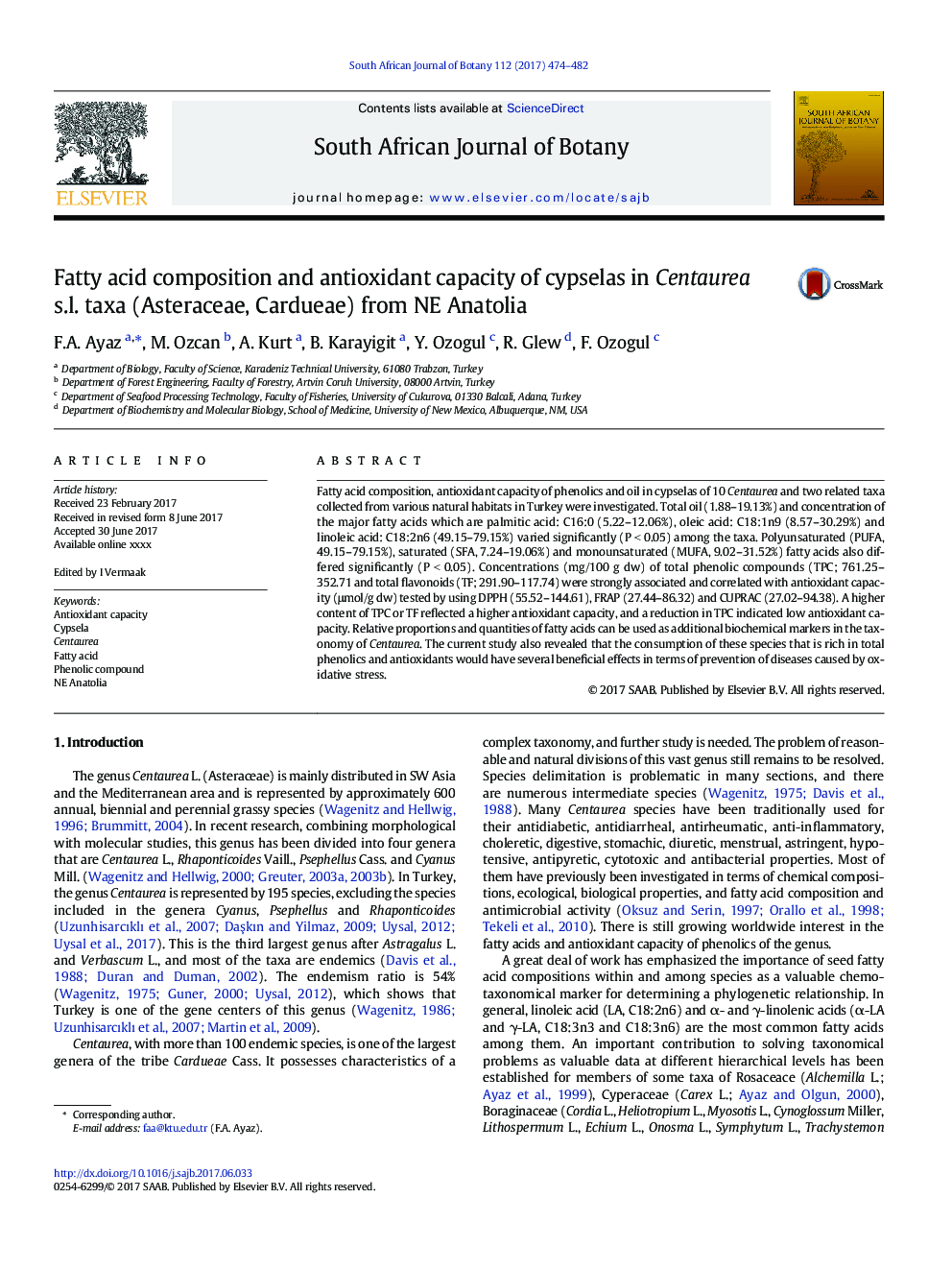| Article ID | Journal | Published Year | Pages | File Type |
|---|---|---|---|---|
| 5763203 | South African Journal of Botany | 2017 | 9 Pages |
Abstract
Fatty acid composition, antioxidant capacity of phenolics and oil in cypselas of 10 Centaurea and two related taxa collected from various natural habitats in Turkey were investigated. Total oil (1.88-19.13%) and concentration of the major fatty acids which are palmitic acid: C16:0 (5.22-12.06%), oleic acid: C18:1n9 (8.57-30.29%) and linoleic acid: C18:2n6 (49.15-79.15%) varied significantly (P < 0.05) among the taxa. Polyunsaturated (PUFA, 49.15-79.15%), saturated (SFA, 7.24-19.06%) and monounsaturated (MUFA, 9.02-31.52%) fatty acids also differed significantly (P < 0.05). Concentrations (mg/100 g dw) of total phenolic compounds (TPC; 761.25-352.71 and total flavonoids (TF; 291.90-117.74) were strongly associated and correlated with antioxidant capacity (μmol/g dw) tested by using DPPH (55.52-144.61), FRAP (27.44-86.32) and CUPRAC (27.02-94.38). A higher content of TPC or TF reflected a higher antioxidant capacity, and a reduction in TPC indicated low antioxidant capacity. Relative proportions and quantities of fatty acids can be used as additional biochemical markers in the taxonomy of Centaurea. The current study also revealed that the consumption of these species that is rich in total phenolics and antioxidants would have several beneficial effects in terms of prevention of diseases caused by oxidative stress.
Related Topics
Life Sciences
Agricultural and Biological Sciences
Agronomy and Crop Science
Authors
F.A. Ayaz, M. Ozcan, A. Kurt, B. Karayigit, Y. Ozogul, R. Glew, F. Ozogul,
